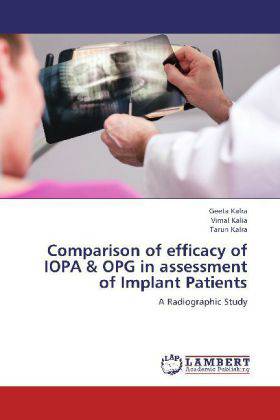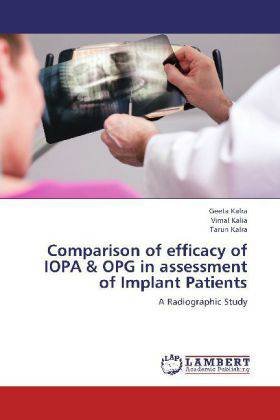
- Afhalen na 1 uur in een winkel met voorraad
- Gratis thuislevering in België vanaf € 30
- Ruim aanbod met 7 miljoen producten
- Afhalen na 1 uur in een winkel met voorraad
- Gratis thuislevering in België vanaf € 30
- Ruim aanbod met 7 miljoen producten
Zoeken
Comparison of efficacy of IOPA & OPG in assessment of Implant Patients
A Radiographic Study
Geeta Kalra, Vimal Kalia, Tarun Kalra
Paperback | Engels
€ 58,45
+ 116 punten
Omschrijving
The long term success of endosseus implants depends mainly on the preservation of bone support.Radiological studies to evaluate changes in marginal peri-implant bone height during implant recall programme are widely acceptable to appreciate this bone support and its long term outcome.Rehabilitation through dental implants which was once a domain of multispeciality metropolitan hospitals is being undertaken by dentists all over the nation. In metropolitan cities, the availability of advanced radiographic techniques like Dentascan promise accuracy and reliability. However these techniques are inaccessible to the implantologist and the patient in suburban areas .Considering Orthopantomographs and Intraoral radiographs are being exposed as a part of the daily routine of dental clinics, hospitals and teaching institutes for implant purposes, an attempt has been made to compare and evaluate the difference if any, in the postoperative outcome of these two radiographic techniques. Also, the agreement between the two techniques in assessment of various landmarks around dental implants has been compared.
Specificaties
Betrokkenen
- Auteur(s):
- Uitgeverij:
Inhoud
- Aantal bladzijden:
- 128
- Taal:
- Engels
Eigenschappen
- Productcode (EAN):
- 9783659166259
- Verschijningsdatum:
- 26/06/2012
- Uitvoering:
- Paperback
- Formaat:
- Trade paperback (VS)
- Afmetingen:
- 152 mm x 229 mm
- Gewicht:
- 199 g

Alleen bij Standaard Boekhandel
+ 116 punten op je klantenkaart van Standaard Boekhandel
Beoordelingen
We publiceren alleen reviews die voldoen aan de voorwaarden voor reviews. Bekijk onze voorwaarden voor reviews.











